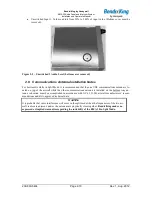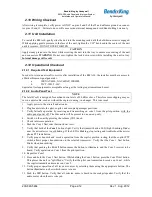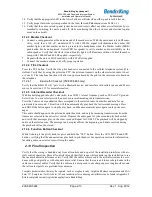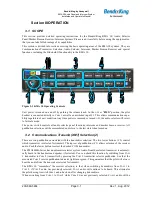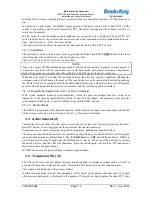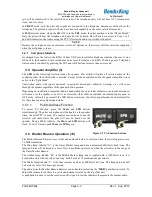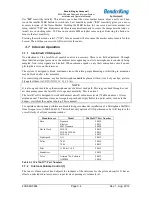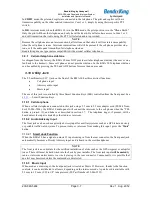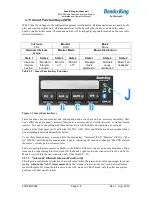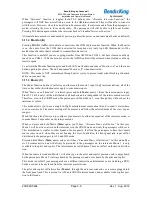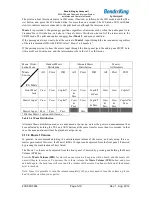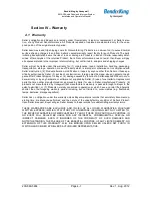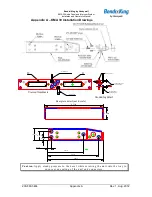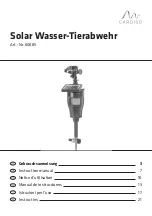
Bendix/King by Honeywell
KMA 30 Audio Panel and Intercom System
Installation and Operator’s Manual
200-890-5464
Page 2-12
Rev. 1, Aug. 2012
2.10 Wiring Checkout
After wiring is complete, verify power is ONLY on pins 8 and 9 of the J2 and airframe ground on connec-
tor pins 10 and 11. Failure to do so will cause serious internal damage and void Bendix/King's warranty.
2.11 Unit Installation
To install the KMA 30, gently slide the unit into the mounting rack until the hold-down screw is engaged.
While applying gentle pressure to the face of the unit, tighten the 3/32" hex-head in the center of the unit
until it is secure. DO NOT OVER TIGHTEN.
CAUTION
Apply steady pressure to the bezel while screwing the unit into the tray to ensure even seating of the unit
and connectors.
WARNING
Do not over-tighten the lock down screw while installing the unit in tray.
Internal damage will result.
2.12 Operational Checkout
2.12.1 Required Test Equipment
In order to return an aircraft to service after installation of the KMA 30, the installer must have access to
a Marker Beacon signal generator:
a.
IFR NAV401L, NAV402AP, IFR4000
b.
TIC T-30D, T-36C
Equivalent test equipment is acceptable as long as the testing requirements can be met.
2.12.2 Audio Panel Test
NOTE
The
IntelliVox
® is designed for ambient noise levels of 80 dB or above. Therefore some clipping may oc-
cur in a quiet cabin, such as without the engine running, in a hangar. This is normal
.
1.
Apply power to the aircraft and avionics.
2.
Plug headsets into the pilot, copilot, and occupied passenger positions.
3.
Verify fail-safe operation by receiving and transmitting on com 1 from the pilot position, with the
audio panel power off. The Com audio will be present in one ear cup only.
4.
Switch on the unit by pressing the volume (VOL) knob.
5.
Check intercom operation.
6.
Push the Com 1 Xmt select button (lower row).
7.
Verify that both of the
Com 1
buttons light. Verify that transmit button LED (Light Emitting Diode)
near the mic selector is not blinking. If the LED is blinking, stop testing and troubleshoot the micro-
phone PTT installation.
8.
Verify proper transmit and receive operation from the copilot position, noting that the copilot PTT
switch allows proper transmission on the selected transceiver. Verify that the Com 1 Xmt button
blinks when transmitting.
9.
Verify that pushing the
C
OM
2
button causes the button to illuminate, and the Com 2 receiver to be
heard. Verify operation on Com 1 from the pilot position.
10.
Repeat for Com 2
11.
Press and hold the Com 1 Xmt button. While holding the Com 1 button, press the Com 2 Xmt button.
This places the unit in “split Mode;” Verify that the pilot can transmit and receive on Com 1, while
the copilot transmits and receives on Com 2.
12.
Verify proper operation of all receiver sources by selecting them using the appropriate button. The
button illuminates to show which source is in use.
13.
Push the SPR button. Verify that all selected audio is heard in the cockpit speaker. Verify that the
audio mutes when the mic is keyed.













